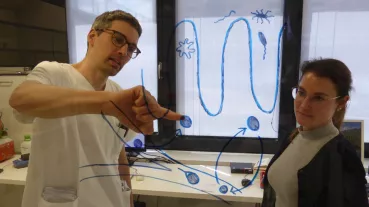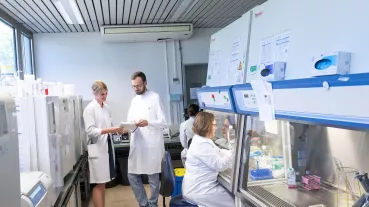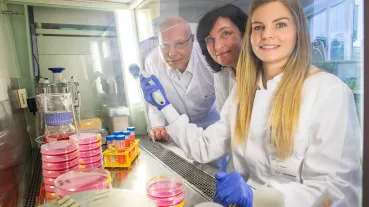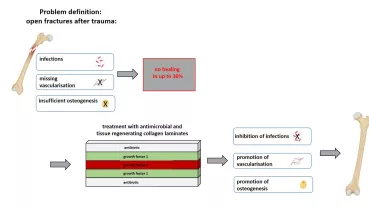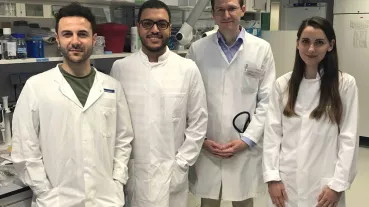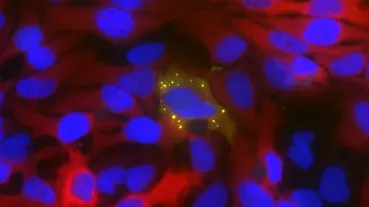Elucidating the interaction of Neutrophil extracellular traps (NETs) and smooth muscle cells during atherosclerotic plaque destabilization.
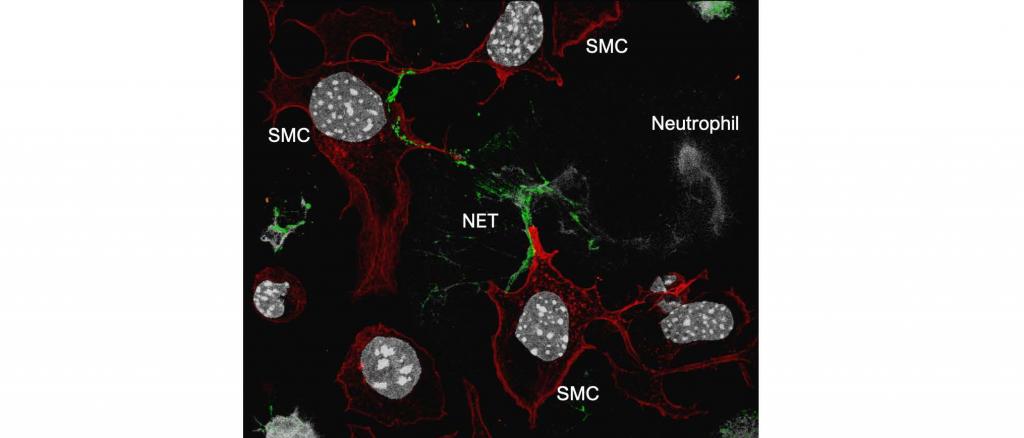
Atherosclerosis remains the leading cause of mortality and morbidity in Western societies. In advanced stages of the disease, excessive cell death fuels inflammation and promote plaque instability, hence increasing the risk of plaque rupture and subsequent thrombosis. Neutrophils -main blood leukocyte in humans- are endowed with a sophisticate machinery to fight pathogens that also contributes to neutrophil-mediated tissue damage. Among these available tools, neutrophil extracellular traps (NETs) are released to combat infection but also accumulate during chronic inflammation and favor the progression of diseases. In this project, I study how neutrophils are recruited to the atherosclerotic lesion and activated to release NETs, thus generating tissue cell death and plaque vulnerability.


